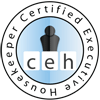The choice of cutting-board material has been a recent topic of debate among food-safety scientists. From shortly after their invention until the 1990s, plastic cutting boards were thought to offer greater protection than wooden boards against illness from bacteria such as E. coli or salmonella. These microorganisms are leading causes of food-borne illness because they can remain for a long time on surfaces exposed to raw or cooked meat or poultry.
Following are a few pointers to keep in mind:
- Proper cleaning and sanitizing offers the best protection from food-borne illness. Cutting boards should be cleaned after slicing breads or vegetables, and both cleaned and sanitized immediately after being used for cutting meat, fish or poultry. This reduces the risk of transmitting illness-causing bacteria to uncontaminated food.
- You may wish to acquire two or more boards and designate each one for a specific task. Meat-cutting surfaces should be kept separate from those used to slice other kinds of food.
- All cutting boards should be scrubbed in hot, soapy water and rinsed thoroughly immediately after use. Sanitize the cleaned cutting surface by flooding it with a highly diluted solution of bleach in water and allowing the solution to set for several minutes. Even a one-to-a-hundred ratio of bleach to water will disinfect well without giving off lots of irritating chlorine vapors. Then, rinse the board thoroughly and dry.
- Wooden boards may be washed in soapy water and rinsed, but be sure to dry the board completely afterward to avoid splitting wood plies. Wooden boards cannot be placed in an automatic dishwasher without damage or splitting.
- You may sanitize a wooden board in the microwave after a hand washing as long as the board fits inside. Monitor the board carefully while operating the microwave to prevent overheating and damage.
- Acrylic, glass and plastic boards may be cleaned in a dishwasher, but be sure to sanitize boards used to cut meats in addition to washing. This is especially true as the cutting surface becomes nicked and gouged from cutting and carving.
- Non-porous glass is a tough surface that’s easy to clean and sanitize, but it will dull knife blades quickly and can damage them permanently. You may choose to use only inexpensive cutlery on glass cutting surfaces, and then discard the knives once dull.
- Plastic boards featuring Microban® antimicrobial protection need to be cleaned and sanitized after use as diligently as regular plastics and other materials. Microban® is not a permanent surface sanitizer. It’s designed solely to keep bacteria from degrading the plastic.
- Over time, all cutting boards wear out to such an extent that effective cleaning and sanitizing become difficult or impossible. Most synthetic boards, and many wooden models, are inexpensive to begin with, so they may be discarded and replaced when worn. When completely dry, expensive or exotic wooden boards with light damage may be refinished by sanding, but many deep gouges can’t be removed successfully using this method. A professional should refinish expensive wooden boards.
References:
Dean O. Cliver, Ph.D., professor of population health and reproduction, University of California at Davis: “Plastic and Wooden Cutting Boards”
U.S. Food Safety and Inspection Service: food safety, cookware and equipment FAQ page









